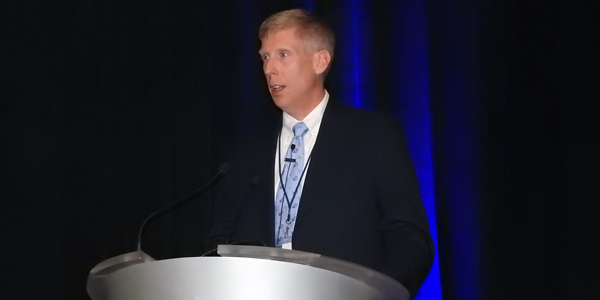By Rory D. Sweeney
PJM agrees there is an issue with maintaining reliability, but not the one suggested by the Department of Energy’s recent call for price supports for coal and nuclear plants.
“The DOE didn’t exactly get it right in the way it attempted to articulate the problem,” Stu Bresler, PJM senior vice president of operations and markets, said Thursday.
During a special conference call to preview the RTO’s plan for responding to FERC’s request for comments on the DOE Notice of Proposed Rulemaking, Bresler said that the real issue is energy price formation. PJM has been working on that topic for more than a year to respond to concerns over public-policy initiatives impacting market prices.
Bresler said that the NOPR — which cited natural disasters and the 2014 cold snap known as the “polar vortex” to argue that units with large on-site fuel stockpiles should be subsidized to save them from retirement — misses the mark. (See FERC’s Independence to be Tested by DOE NOPR.)
“The point is that just maintaining a whole lot of resources with a 90-day fuel supply on site would not have relieved the problems with a majority of the outages during the polar vortex,” Bresler said. “While the polar vortex did highlight the need for the markets to ensure that we are signaling the need for resources to be able to operate on peak days, just resources with long-term fuel supplies on site was not the majority of the issue.”
During natural disasters, Bresler said, the main challenge is downed power lines, not generating plants being unable to run.
“Events like that … primarily affect the delivery system from supply to demand, not the supply resources themselves,” he said, noting that some coal plants impacted by Hurricane Harvey this summer weren’t able to run at full capacity because their coal piles were soaked.
“In the interest of framing the right problem, we will point out these things that we feel sort of led DOE down the wrong path as far as what the actual problem is,” he said. “We will say, however, that there is an issue that we do need to address, specifically to the PJM region. And that is the fact that there are some instances in PJM where not all resources are valued appropriately for the fact that they are relied upon to reliably meet the demand. … We are concerned that resources right now may not be offering as much flexibility as they could provide because they don’t have incentive to do it.”
Using competitive markets to “transparently” price needs is “superior” to providing cost-of-service payments to certain unit types, he said.
“One concern we have with the DOE approach is it seems to imply that while we may need to keep some of these resources around to ensure reliability and resilience, so therefore let’s keep them all,” Bresler explained. “That again is, from our standpoint, inefficient from the standpoint of the cost to load. Whereas the markets, we believe, have done a very good job to provide the discipline for what really is necessary and what’s not necessary and thereby not just provide efficient signals for entry, but also provide efficient signals for exit.”
The response will include a version of a proposal PJM staff presented at its August meeting of the Markets and Reliability Committee. Bresler said the proposal will be revised and presented again at the Dec. 7 MRC meeting.



